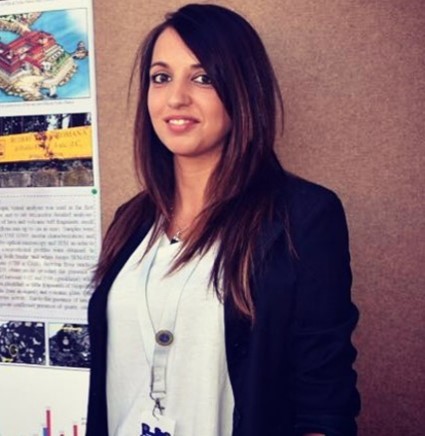Science and Technology of Roman Historical Buildings' Coating Materials
A special issue of Coatings (ISSN 2079-6412). This special issue belongs to the section "Surface Characterization, Deposition and Modification".
Deadline for manuscript submissions: closed (31 March 2024) | Viewed by 4826
Special Issue Editors
2. Faculty of Materials Engineering, Valahia University of Targoviste, 130004 Targoviste, Romania
Interests: cultural heritage; ceramics; glasses; mortars; rock weathering; conservation; nanomaterials
Special Issues, Collections and Topics in MDPI journals
Interests: cultural heritage; mining heritage; mineralogy; crystallography; crystal chemistry; ceramics; glasses; mortars; rock weathering; synchrotron radiation
Special Issues, Collections and Topics in MDPI journals
Interests: cultural heritage; archaeometry; coservation sciences, applied mineralogy; mortars, ceramics; building materials, glasses; zeolites, x-ray diffraction
Special Issues, Collections and Topics in MDPI journals
Special Issue Information
Dear Colleagues,
Today, historical buildings contain various geomaterials dating back centuries, many of which are in poor conditions, which is why they need well-documented conservative restoration. Thus, materials such as aggregates, cements, mortars, concretes, bricks, tiles, and building stones are identified and diagnosed in order to determine the best way to preserve them.
This Special Issue is dedicated to medieval Roman mortars, mosaics, pottery, and various coatings materials from Europe and beyond and provides appropriate diagnosis methods for repairing façade defects, defining a proper methodology for repairing defects and building elements. Visual aspects, provenance, fabrication, strength, durability, insulation, and macroscopic and physicochemical properties of building materials will be correlated with chemical composition, crystallinity, size, shape, distribution, and particle orientation.
The construction materials will be quantified via several analytical methods: microscopic techniques (optics, SEM, TEM), spectroscopic methods (XRD, XRF, neutron tomography), spectral techniques (UV-Vis, FTIR, Raman), some of them well equipped for the study of mineralogy, and compositional study methods (GC-MS, GC-MS-TOF, ICP-MS, etc.). Ultrafine particles and nanoparticles (NPs), minerals, and amorphous phases present in medieval Roman ruins are also highlighted, keeping in mind that analysis applied to mortars and ceramics samples from the ruins has shown aluminosilicates, silicates, Fe hydroxides, amorphous phases, and carbonatic phases.
Particularities related to the location of the Roman mortars, mosaics, pottery, and various coating materials will be defined and presented in this Special Issue, to which we invite you to participate.
Prof. Dr. Rodica-Mariana Ion
Dr. João Pedro Veiga
Dr. Concetta Rispoli
Guest Editors
Manuscript Submission Information
Manuscripts should be submitted online at www.mdpi.com by registering and logging in to this website. Once you are registered, click here to go to the submission form. Manuscripts can be submitted until the deadline. All submissions that pass pre-check are peer-reviewed. Accepted papers will be published continuously in the journal (as soon as accepted) and will be listed together on the special issue website. Research articles, review articles as well as short communications are invited. For planned papers, a title and short abstract (about 100 words) can be sent to the Editorial Office for announcement on this website.
Submitted manuscripts should not have been published previously, nor be under consideration for publication elsewhere (except conference proceedings papers). All manuscripts are thoroughly refereed through a single-blind peer-review process. A guide for authors and other relevant information for submission of manuscripts is available on the Instructions for Authors page. Coatings is an international peer-reviewed open access monthly journal published by MDPI.
Please visit the Instructions for Authors page before submitting a manuscript. The Article Processing Charge (APC) for publication in this open access journal is 2600 CHF (Swiss Francs). Submitted papers should be well formatted and use good English. Authors may use MDPI's English editing service prior to publication or during author revisions.







